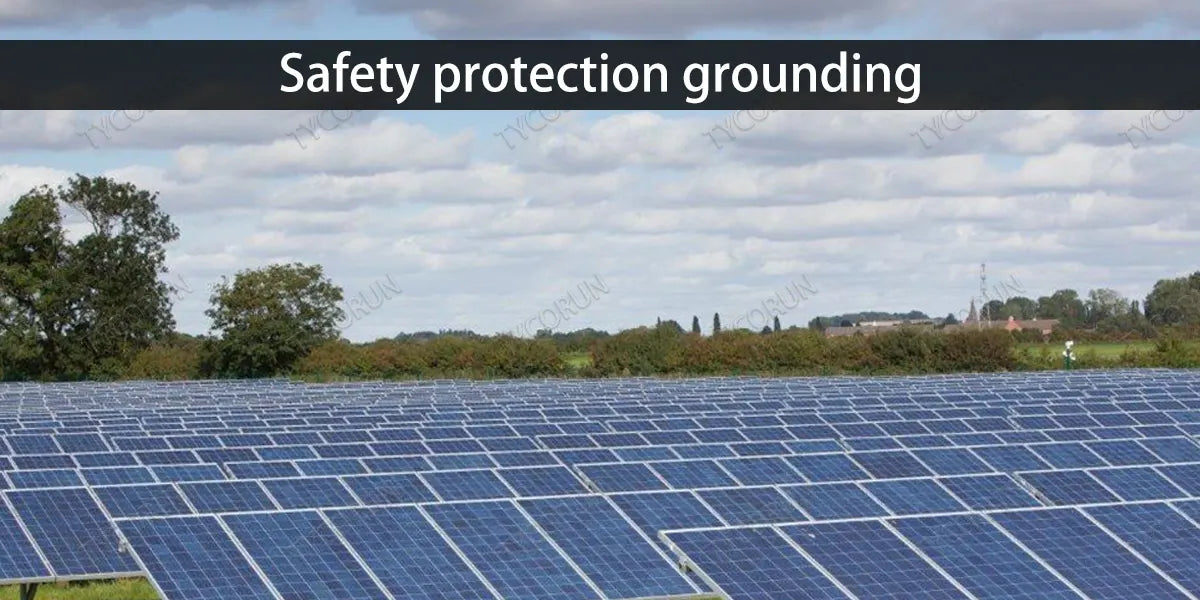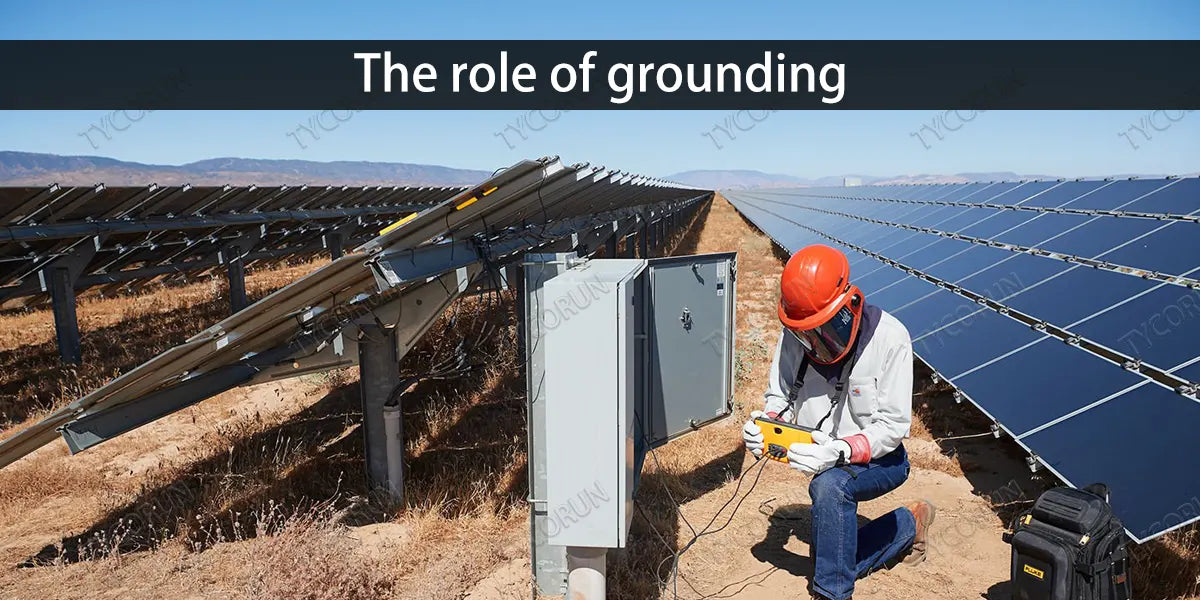
In the photovoltaic power station system, the design of grounding is a crucial part of the electrical design, which is related to the equipment safety and personnel safety of the power station.
A good grounding design can ensure that the power station is in a safe operating environment for a long time, reduce the frequency of power station failure, and improve the overall operation efficiency of the power station.
1. What is PV grounding
Grounding refers to the neutral point of the power system and electrical installation, the exposed conductive part of the electrical equipment and the external conductive part of the device connected to the earth through conductors. It can be divided into several types: working grounding, lightning protection grounding and protective grounding.
2. What are the types of grounding
Lightning protection grounding, working grounding, protective grounding, shielding grounding, anti-static grounding, etc.
- Lightning protection grounding
Lightning protection grounding is a grounding system to prevent damage when attacked by lightning (direct hit, induction, or line introduction). As part of lightning protection measures, lightning protection grounding is used to introduce lightning current into the earth.

The lightning protection of buildings and electrical equipment is mainly connected with the protected equipment at one end of the lightning arrester (including lightning rod, lightning belt, lightning protection net and lightning elimination device, etc.), and the other end is connected to the ground device.
In addition, in order to prevent consequential damage, such as fire or electric shock, it is common for ground metal equipment, metal pipes, and steel structures in the building due to electrostatic induction side effects caused by lightning.
- Communication work grounding
A point in the power system is connected to the earth directly or through special equipment. Working grounding mainly refers to the neutral point or neutral (N-wire) transformer grounding, also the 3000w inverter. The N wire must be insulated with a copper core.
There are auxiliary equipotential terminals in power distribution, and equipotential terminals are generally in the cabinet. It must be noted that the terminal block cannot be exposed, cannot be mixed with other grounding systems, such as DC grounding, shield grounding, anti-static grounding, etc., and cannot be connected with PE wires.
- Safety protection grounding
Safety protection grounding is to make a good metal connection between the uncharged metal part of the electrical equipment and the grounding body. In photovoltaic power plants, there are mainly inverters, modules and distribution boxes for safety protection and grounding.

- Shield grounding
In order to prevent external electromagnetic field interference, the grounding of the electronic equipment shell and the shielded wires or metal pipes worn inside and outside the equipment is called shielding grounding.
This grounding method is usually used in photovoltaic power plants to ground the shield layer of communication lines, and can effectively prevent the interference of electromagnetic fields on communication when multiple inverters conduct serial communication.
- Anti-static grounding
For some special inverter installation environments, such as installation in a dry computer room, the grounding carried out to prevent the interference of the electrostatic inverter generated by the dry environment of the computer room is called anti-static grounding. The anti-static grounding device can be shared with the safety grounding device of the inverter.
3. The role of grounding
- Protection against electric shock
The more humid the environment, the lower the impedance of the human body, and the more susceptible it is to electric shock. Grounding is an effective way to prevent electric shock. After the electrical equipment is grounded by the grounding device, the potential of the electrical equipment is close to the ground potential.
Due to the existence of grounding resistance, the potential of 2000 watt inverter to the ground always exists, and the greater the grounding resistance of electrical equipment, the greater the potential to the ground of electrical equipment when a fault occurs, and the greater the danger when touched.
However, if a grounding device is not installed, the voltage of the shell of the faulty equipment will be the same as the voltage of the phase line to the ground, which is still much higher than the grounding voltage, so the danger will increase accordingly.

- Ensure the normal operation of the power system
The grounding of the power system, also known as working grounding, is generally grounded at the neutral point in the substation. The grounding resistance of the working grounding is very small, and there is a grounding network for large substation layout to ensure that the grounding resistance is small and reliable.
The purpose of working grounding is to bring the potential between the neutral point of the grid and the ground close to zero. If the neutral point is ground insulated, the ground voltage of the other two phases will be increased to 3 times the phase voltage, and the result may burn the electrical equipment with a working voltage of 220.
In a system that is grounded to the neutral point, even if one phase is short-circuited to the ground, the other two phases can still approach the phase voltage, so electrical equipment connected to the other two phases will not be damaged. In addition, the system is protected from oscillation, and the insulation level of electrical equipment and wiring is only to be considered in terms of phase voltage.
- Protection against lightning strikes and electrostatic hazards
When lightning occurs, in addition to direct lightning, induction lightning will also be produced, and induced lightning is divided into static and blunt induction lightning and electromagnetic induction lightning. The most important of all lightning protection measures is grounding.
4. Conclusion
As a set of long-term operating systems, photovoltaic power stations need to be grounded during design and construction to reduce unnecessary operation and maintenance at the later stage to ensure the long-term stability, safety and efficient operation of the system.
Related articles: voltage vs current, solar thermal power station, AC coupling vs DC coupling
















